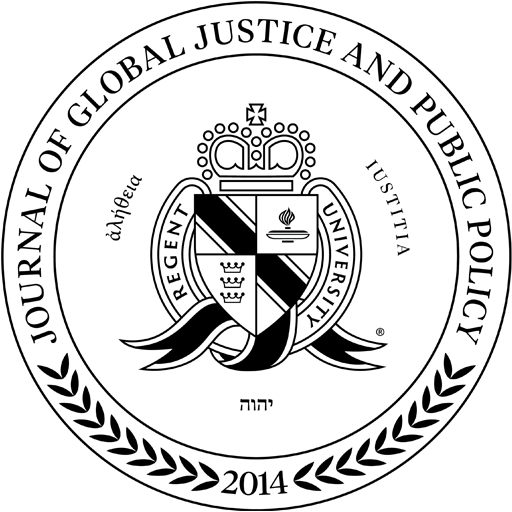Vivian Hamilton† | 3 Regent J. Glob. Just. & Pub. Pol. 170
Thank you to Ernie Walton and the Center for Global Justice, Human Rights, and the Rule of Law for inviting me to participate in today’s Symposium. I divide my comments today into three parts. First, I’ll discuss how the Supreme Court has come to view the nature of the individual rights that first received Constitutional protection in Griswold v. Connecticut.1 Then, I’ll turn to the effect of Griswold and its progeny on women’s social and economic equality in the U.S. And finally, I’ll offer some thoughts on the future and challenges that continue to face women who seek equal opportunities to define for themselves how their lives should go.
I. GRISWOLD V. CONNECTICUT (AND PROGENY)
In Griswold, the Supreme Court held that a state law criminalizing the use of contraception violated married couples’ privacy rights. 2 The decision promised that couples would be free from state intrusion into the bedroom.3 Seven years later, in Eisenstadt v. Baird, the Court extended the same protection to unmarried couples.
The Court in Griswold found the right to privacy implicit in the various provisions of the Bill of Rights.5 Justice Goldberg’s concurrence, moreover, pointed to the Ninth Amendment’s assurance that the enumeration of certain rights should not be construed to deny the existence of others. 6 In other words, the Framers understood the impossibility of cataloging all individual rights entitled to Constitutional protection (one of the reasons given by Alexander Hamilton for excluding from the Constitution altogether a Bill of Rights). 7 The Ninth Amendment clarifies that the list of rights spelled out in the Bill of Rights is not an exhaustive one. 8
Nonetheless, Constitutional originalists have long criticized the approach taken by the Griswold Court. 9 And I think the Court has responded by better explaining the nature of the privacy right in its later decisions. Eisenstadt v. Baird more explicitly grounded the right to privacy in the Fourteenth Amendment as part of the liberty guaranteed by that provision. 10 In Lawrence v. Texas, where the Court held in 2003 that criminalizing gay sex was not within the Constitutional power of the states, 11 Justice Kennedy wrote for the Court that “[l]iberty … presumes an autonomy of self that includes freedom of thought, belief, expression, and certain intimate conduct…. [L]iberty gives substantial protection to adult persons in deciding how to conduct their private lives in matters pertaining to sex.” 12
Justice Kennedy also takes a jab at strict interpretationists. In surmising why the Framers did not explicitly include the right to adult consensual intimate conduct (including same-sex conduct), he writes in Lawrence, “[h]ad those who drew and ratified the Due Process Clauses of the Fifth Amendment or the Fourteenth Amendment known the components of liberty in its manifold possibilities, they might have been more specific. They did not presume to have this insight.” 13 The document that establishes the foundational principles of the nation’s government and rights of individuals within it is not a statute or administrative regulation; it’s a Constitution.
Griswold and its progeny thus establish that we individuals have a Constitutionally-protected liberty interest in private intimate conduct. 14 Pure moral disapproval of conduct is not a sufficient reason for the state to prohibit conduct. For example, the Court held that the Texas statute criminalizing gay sex “further[ed] no legitimate state interest which can justify its intrusion into the personal and private life of the individual.” 15
Today we understand “privacy” to be an essential aspect of “liberty,” the essence of which is “[l]iberty . . . from unwarranted government[al] intrusion[].” 16
† Cabell Research Professor of Law, William & Mary School of Law. I thank the Institute at Regent University for inviting me to participate in this Symposium, and Charles Alvis for excellent research assistance.
1 Griswold v. Connecticut, 381 U.S. 479 (1965).
2 Id. at 485.
3 See id. at 485–86.
4 Eisenstadt v. Baird, 405 U.S. 438, 443, 454–55 (1972).
5 Griswold, 381 U.S. at 484–85.
6 Id. at 486–87 (Goldberg, J., concurring).
7 Id. at 486–89, 489 n.4.
8 Id. at 492.
9 See, e.g., Robert H. Bork, Neutral Principles and Some First Amendment Problems, 47 IND. L.J. 1, 7–9 (1971) (arguing that Griswold “is an unprincipled decision, both in the way in which it derives a new constitutional right and in the way it defines that right, or rather fails to define it”); Nelson Lund & John O. McGinnis, Lawrence v. Texas and Judicial Hubris, 102 M ICH. L. REV . 1555, 1597–98 (2004) (“The Griswold-Roe-Lawrence line of cases has no apparent basis in the text or original meaning of the Due Process Clauses, and the Justices have never tried to show that there is one.”). Cf. Jamal Greene, The So-Called Right to Privacy, 43 U.C. DAVIS L. REV. 715, 742–43 (2010) (suggesting that progressives should answer these criticisms by reclassifying privacy rights as liberty rights).
10 See Richard A. Posner, The Uncertain Protection of Privacy by the Supreme Court, 1979 SUP. CT. REV . 173, 197–98 (arguing that Eisenstadt “unmasks Griswold as based on the idea of sexual liberty rather than privacy” because the law challenged in Eisenstadt restricted the distribution rather than the use of contraceptives).
11 Lawrence v. Texas, 539 U.S. 558, 567, 578–79 (2003).
12 Id. at 562, 572 (emphasis added).
13 Id. at 578–79 (emphasis added).
14 See Lawrence v. Texas, 539 U.S. 558, 578 (2003); Eisenstadt v. Baird, 405 U.S. 438, 453–54 (1972); Griswold v. Connecticut, 381 U.S. 479, 485–86 (1965).
15 Lawrence, 539 U.S. at 578.
16 Id. at 562.
